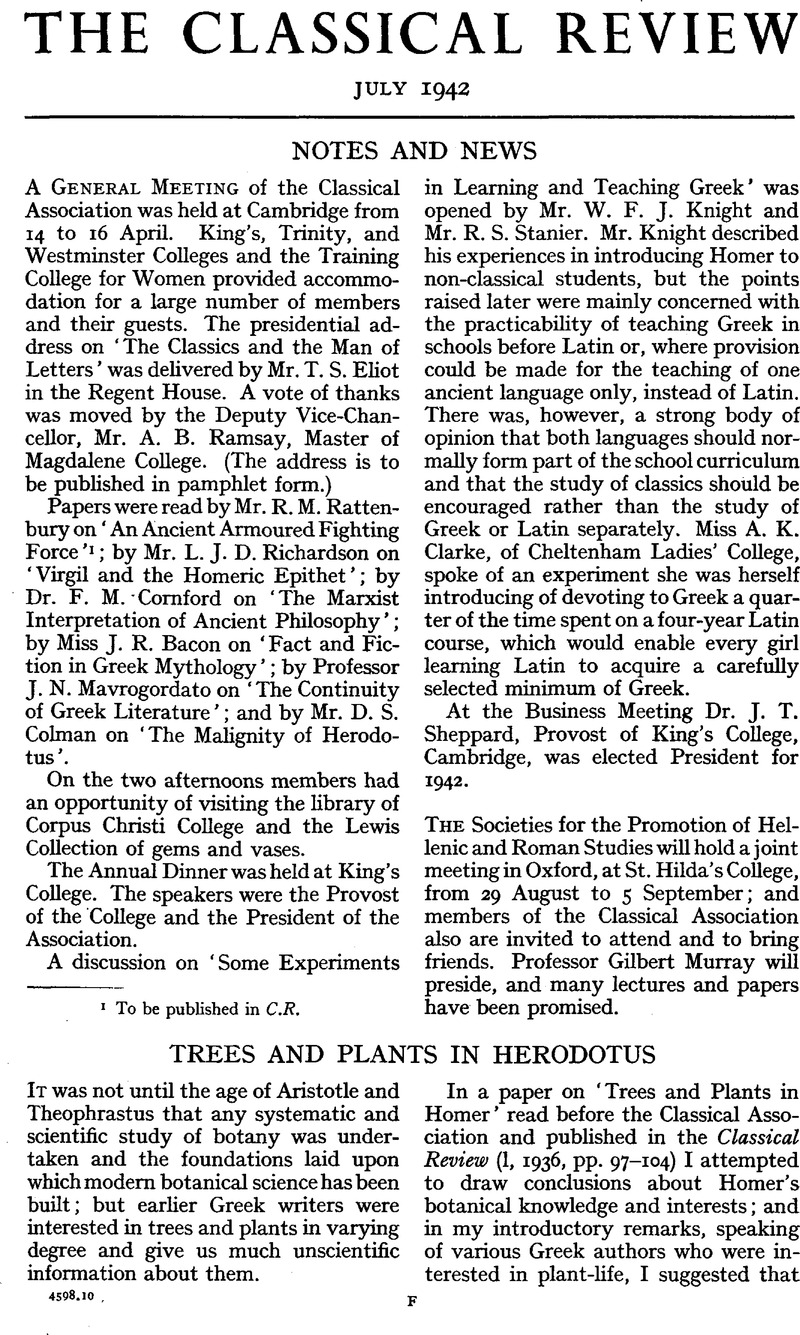Article contents
Trees and Plants in Herodotus
Published online by Cambridge University Press: 27 October 2009
Abstract

- Type
- Review Article
- Information
- Copyright
- Copyright © The Classical Association 1942
References
page 58 note 1 I also suggested that Theocritus ‘could be shown to be a true child of the age in which he lived as having a genuine scientific interest in botany’. This subject has been ably treated by Miss Alice Lindsell in an article entitled ‘Was Theocritus a Botanist?’ (Greece and Rome, vi, pp. 78–93), in which she shows not only that Theocritus, who was originally trained for the medical profession, was a scientific botanist, but also that his botanical references can be used to locate the scenes of the various poems.
page 59 note 1 In actual fact the fig is fertilized by the gallfly but not the date.
page 60 note 1 Or possibly F. marmarica, which still grows in Cyrenaica (see Journ. Bot., March 1941, p. 36).
page 62 note 1 The mention of the roses which grew in the garden of Midas (viii. 138) seems to be the only instance in which he refers to flowers for their own sake.
page 62 note 2 The only mention of such methods is the use of the gall-fly for fructifying the date-palm and the fig (i. 193).
page 63 note 1 Unless, indeed, we see a reference to rice in H.'s mention of a ‘grain, growing naturally from the earth, about the size of millet-seed, which they [the Indians] gather and roast and eat, husk and all’ (iii. 100).
- 4
- Cited by


